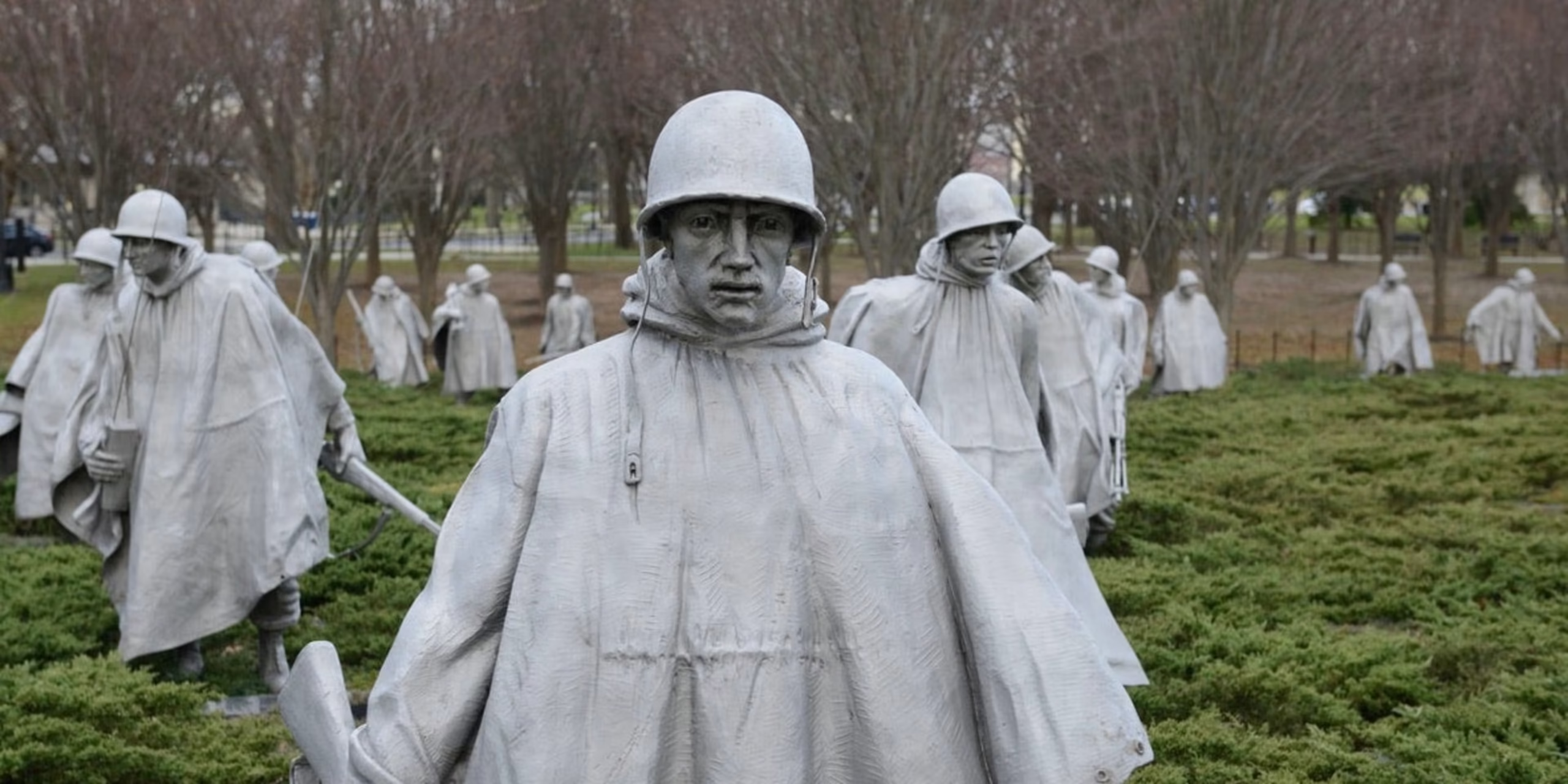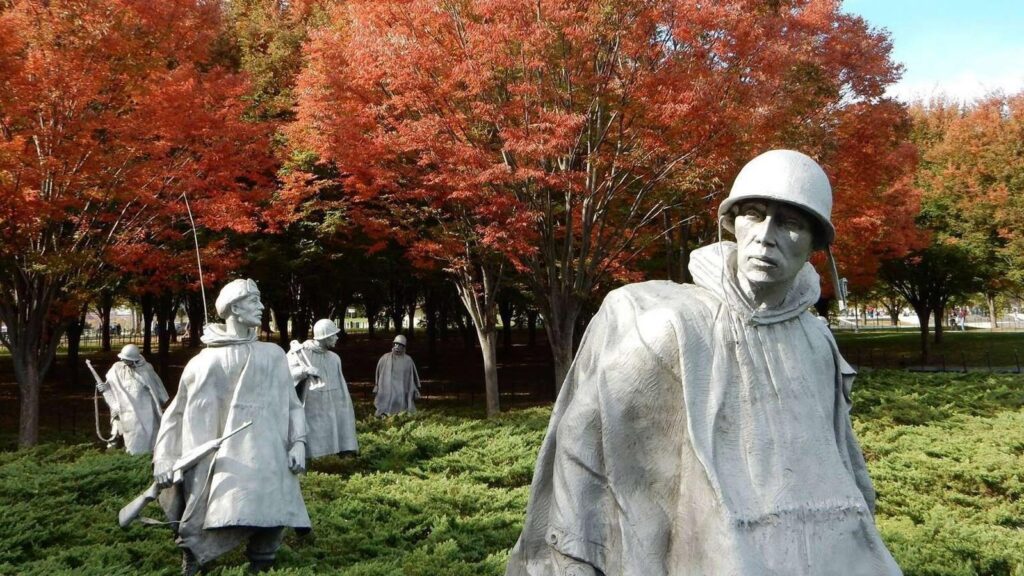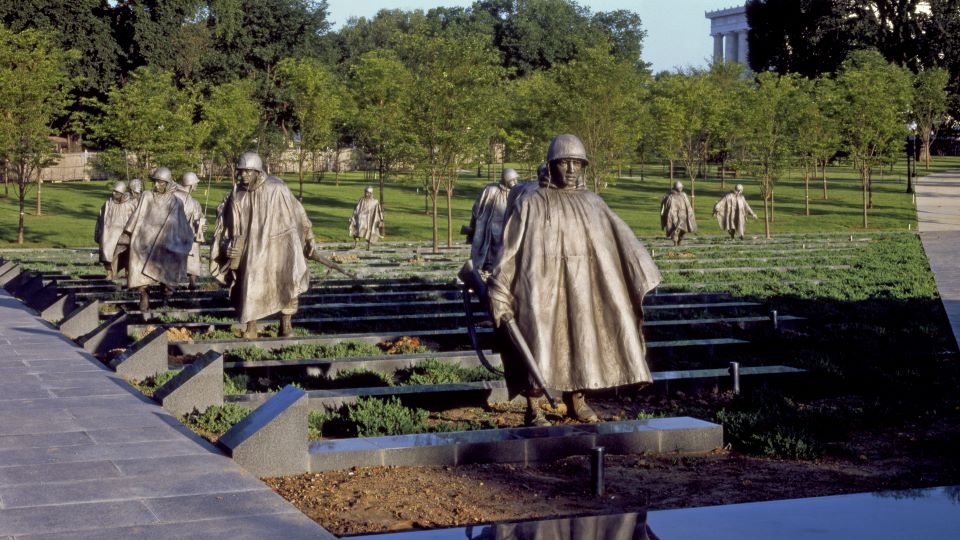The Story of the 19 Statues: Honoring the Korean War’s Forgotten Heroes

The Korean War Veterans Memorial in Washington, D.C., stands as a solemn tribute to the men and women who served in one of the most challenging and often overlooked conflicts in American history—the Korean War (1950–1953). Among its most striking features are 19 stainless steel statues of soldiers on patrol, arranged as if moving through rugged terrain. These 19 statues are rich with symbolism and meaning, representing not only a single squad of soldiers but also the sacrifice, unity, and diversity of all who fought during the war. This article explores the full story behind these statues and what they signify for the legacy of the Korean War’s “forgotten heroes.”
The Historical Context of the Korean War
The Korean War began on June 25, 1950, when North Korean troops crossed the 38th parallel and invaded South Korea. The conflict quickly escalated into a brutal war involving a United Nations coalition led primarily by the United States. Over the next three years, the war would see fierce battles fought across challenging terrain and harsh weather conditions, from freezing winters to sweltering summers.
The Korean War resulted in the deaths of more than 36,000 American service members, with millions of others wounded or missing. Despite the magnitude of the conflict and its impact on global politics—particularly the containment of communism during the Cold War—it has often been referred to as the “Forgotten War,” overshadowed in public memory by World War II and Vietnam.
In recognition of the sacrifices made, the Korean War Veterans Memorial was dedicated on July 27, 1995, located near the Lincoln Memorial in the nation’s capital. It honors the service and sacrifice of the millions of Americans who served and died in the war.

Why 19 Statues? Understanding the Representation
The 19 statues are the centerpiece of the memorial and represent a single patrol squad from the United States Army’s 1st Cavalry Division. The number 19 is significant because it reflects the typical size of an infantry squad during the Korean War era.
Composition of a Typical Squad
A squad generally consisted of:
- A Squad Leader: Responsible for guiding and directing the team.
- Riflemen: The primary infantry soldiers armed with rifles.
- Machine Gunner: Providing suppressive firepower.
- Grenadier: Equipped with grenade launchers.
- Medic: Providing first aid and emergency medical support.
Each soldier played a crucial role, and the squad operated as a cohesive, interdependent unit.
The Artistic Vision
Sculptor Frank Gaylord created the statues with an intense focus on realism and detail. The soldiers are depicted in full combat gear—helmets, rifles, packs, and weapons—moving carefully through rocky terrain, symbolizing vigilance and readiness. Their varied postures show some scanning the horizon, others kneeling or crouching, communicating the tension and uncertainty soldiers faced on patrol.
The figures are made of stainless steel, which reflects their environment, blending them into the surroundings and creating a haunting, almost ghostlike presence. This design evokes the idea of soldiers’ spirits still guarding the memory of their comrades.
Symbolism and Deeper Meaning
The 19 statues symbolize more than just a single patrol squad. They embody the collective spirit, courage, and sacrifice of all Americans who served in Korea. Here are some of the deeper meanings represented:
Unity Across Military Branches
Though the statues depict an Army squad, they symbolize the collective effort of all branches of the U.S. military—the Army, Navy, Air Force, and Marine Corps—that participated in the Korean War. The memorial pays homage to every service member, regardless of branch or role.
Diversity and Representation
The statues portray soldiers of different ethnic backgrounds and roles, reflecting the diverse makeup of the American forces. This inclusivity honors the contributions of African Americans, Asian Americans, and other minorities who fought valiantly in the war.
Harsh Terrain and Conditions
The figures appear to be moving through rough, uneven ground, depicted by flagstones beneath their feet. This conveys the difficult natural environment soldiers endured: steep mountains, icy winters, and muddy battlefields. It emphasizes the physical and mental challenges faced in combat.
Immersive and Reflective Experience
Positioned near a reflective granite wall etched with more than 2,500 images from the Korean War, the statues are multiplied in reflection, creating the illusion of a larger squad. This design encourages visitors to imagine the countless soldiers involved and the scale of the conflict.
Additional Features of the Memorial
Besides the statues, the Korean War Veterans Memorial includes other elements that deepen its impact:
- The Wall of Remembrance: A low polished granite wall etched with the phrase “Freedom Is Not Free,” reminding visitors of the cost of liberty.
- The Pool of Remembrance: A contemplative space with water and benches, encouraging quiet reflection.
- Flags: The American flag and the United Nations flag fly side by side, underscoring the international effort in the Korean War.
Honoring the Forgotten Heroes
The 19 statues stand as a testament to the bravery and sacrifice of the men and women who served in the Korean War—a conflict often overshadowed in American history. The memorial ensures that these soldiers are not forgotten and that their service is recognized and honored.
Through realistic depiction and symbolic design, the memorial conveys the harsh realities of war, the unity of diverse forces, and the enduring legacy of those who fought for freedom.

Conclusion
The story of the 19 statues at the Korean War Veterans Memorial is one of remembrance, respect, and recognition. These statues represent a single squad but symbolize an entire generation of American soldiers who fought bravely and endured great hardship in the Korean War. The memorial captures their spirit and sacrifices in steel and stone, ensuring their legacy lives on for future generations.
By visiting the memorial or learning about its story, we honor the “Forgotten War” heroes and remind ourselves that freedom truly is not free.




